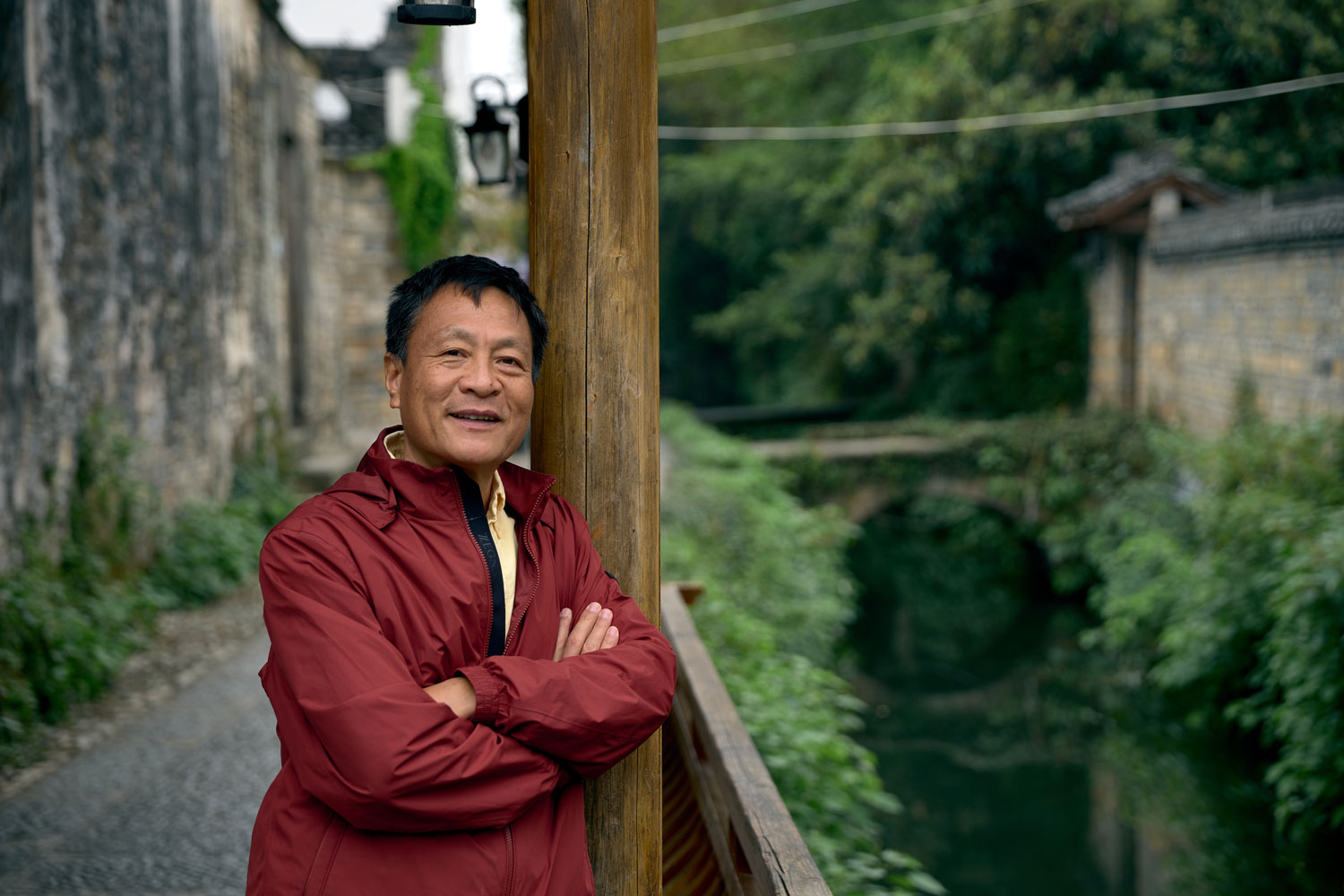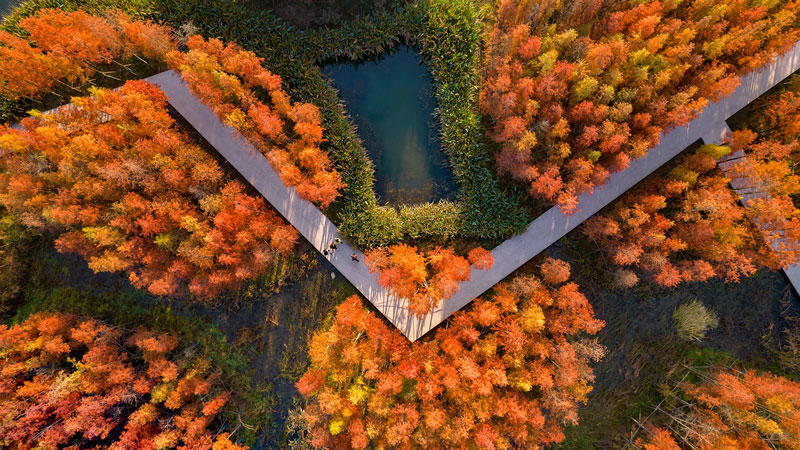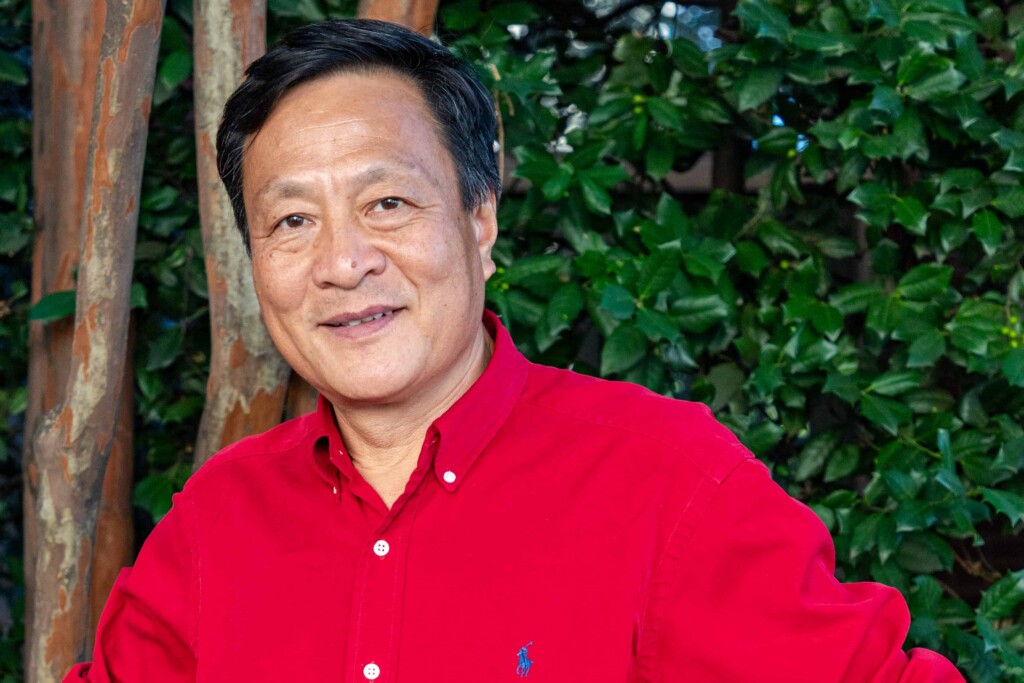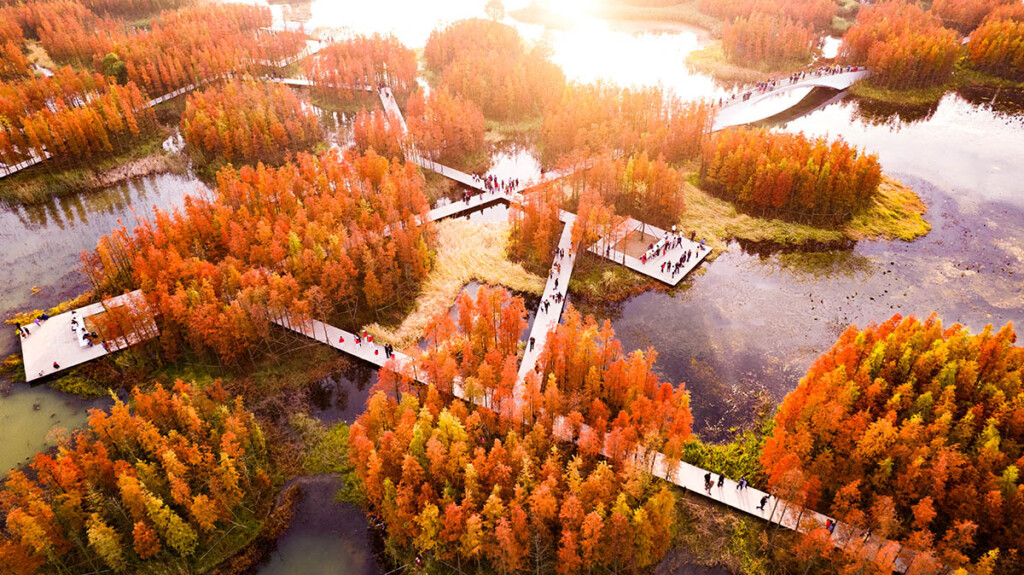Kongjian Yu (DDes ’95) was a tireless advocate for the “new art” of landscape architecture as a means of improving people’s lives in tangible, material ways. He was a charismatic speaker, a dedicated teacher, and a role model for a generation of designers. He leaves a global legacy of consequential works and lasting impacts. He was characteristically kind, empathetic, and funny. He was my friend, as he was a friend to countless others around the world who were illuminated by his generous light.
Yu’s personal origins and professional aspirations illustrate the potential for modernity as an incomplete project. His life and work illustrate the vital role of higher education, knowledge transfer, and international exchange in addressing our contemporary challenges. This is particularly timely as those institutions and practices are under threat by many who would close our borders and our programs to international exchange.
Yu was born the second son and third child to peasant parents in a rural farming village in Zhejiang Province, in eastern China. His birth in 1963 coincided with Premier Zhou Enlai’s announcement of the “Four Modernizations.” Among those reforms was university admissions via national placement examinations. Another early implication of the “Four Modernizations” was the return to Beijing in 1979 of Beijing Forestry University’s landscape architecture program. The program had been among those exiled to Yunnan Province in the remote southwestern corner of the country during the 1960s in the context of the “Great Proletarian Cultural Revolution.” Yu’s abundant intelligence, as evidenced by the national placement exam, placed him into the Beijing Forestry University in where he completed his undergraduate and graduate degrees in landscape architecture.
While a student at the newly restored Beijing Foresty University, Yu had access to English texts on landscape architecture that survived the Cultural Revolution. During his graduate work, Yu read seminal English language books on urban planning and landscape architecture by Kevin Lynch, Ian McHarg, and Richard Forman. Given his literacy, his growing grasp of English, and his status as a top graduate student from his program, Yu was asked to translate a series of three lectures delivered by Harvard professor Carl Steinitz at Beijing Forestry University in 1987. Steinitz encouraged the young Yu to apply to the newly formed Doctor of Design degree, first offered in 1986 at Harvard’s Graduate School of Design.
Yu was the first Chinese student to matriculate into the new program in 1992 where he worked closely with Steinitz on geospatial planning and with professor Richard Forman on landscape ecology. Yu successfully defended his dissertation on the topic of “Security Patterns in Landscape Planning” in 1995. That work would inform his large-scale landscape planning projects in China over the next several decades.
Following several years of professional experience working as a landscape architect and planner in California, Yu returned to China in 1997. Once there, Yu published a small pamphlet, Advice to Mayors, advocating landscape planning as a means of managing the negative impacts of rapid urbanization. He sent copies to the mayors of 500 cities across China. That same year he founded the College of Architecture and Landscape Architecture at Peking University, where he served as dean. In 1998, Yu founded a Western-style landscape architecture and planning practice, Turenscape. Through the subsequent decade, Yu delivered lectures to the Chinese Ministry of Construction’s Conference of Mayors and published an influential treatise The Road to Urban Landscape: A Dialogue with Mayors. Through these initiatives, Yu effectively advocated a scientifically informed ecological planning agenda at a national scale. He also built an internationally significant practice through hundreds of projects across China, and beyond.
Yu’s influence extended well beyond his native China. He was a perennial contributor to professional societies, conferences, and convenings globally. He was a singularly effective advocate for the role of landscape architecture in insulating populations from human and natural disasters. His work was recognized by major international bodies as the highest form of professional achievement. Yu was awarded the Cornelia Hahn Oberlander International Landscape Architecture Prize by the Cultural Landscape Foundation and the Sir Geoffrey Jellicoe Award by the International Federation of Landscape Architects, two of the highest honors bestowed by our field.
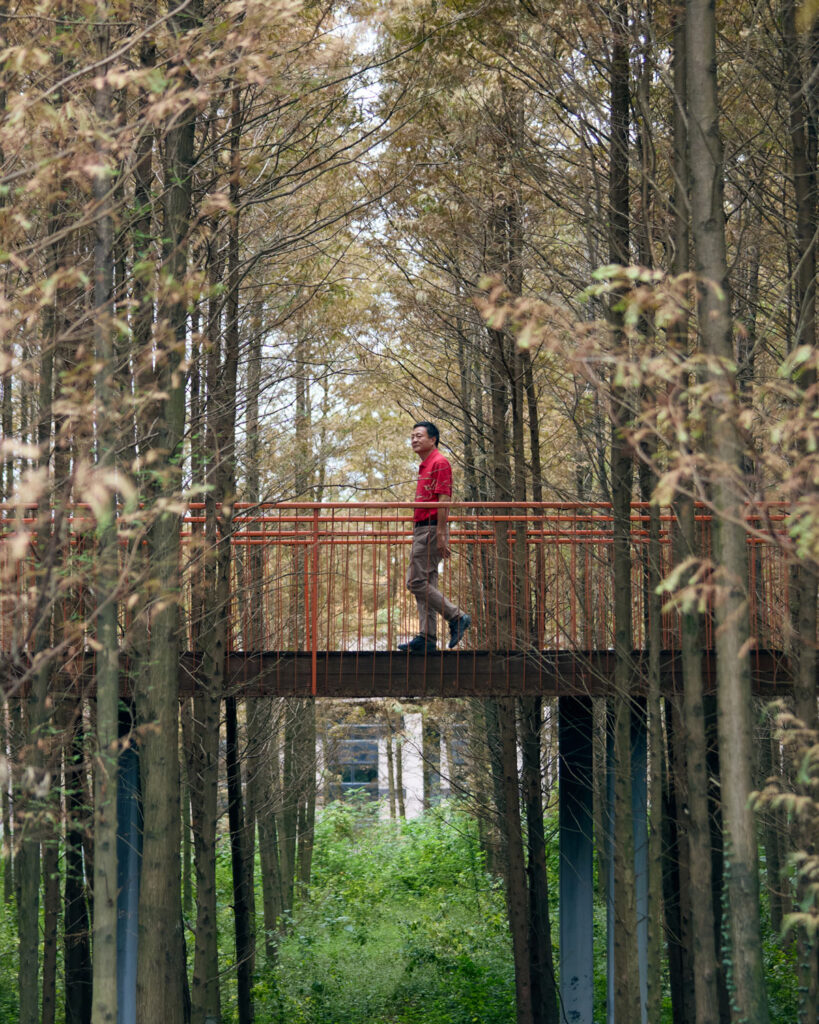
China’s most prominent and influential landscape architect on the world stage, Yu was at the forefront of the nation’s efforts to mitigate the adverse impacts of rapid urbanization and manage adaptation to climate change. Yu and his colleagues at Turenscape built hundreds of experimental landscapes, gathering invaluable evidence of environmental performance across wildly disparate regions and contexts. These case studies offer a menu of strategies and tactics for human adaptation in the face of a rapidly changing climate. Several years after his return to China—amid a wave of rural development under the aegis of the New Socialist Countryside—Yu was asked by the Environmental Protection Bureau to use his method of ecological analysis as the basis for a national ecological security plan. This concept was later adopted by the Ministry of Land Resources and became the foundation for the national Ecological Red Line Regulation. The resulting plan, the 2008 National Ecological Security Pattern Plan for China, established a framework for ecological urbanization that addressed issues of water management and conservation, soil erosion, and biodiversity. The framework outlined an approach described as “negative planning,” in which planning processes began not by identifying sites for development but by mapping high-risk sites to be protected from development. Once such sites had been established, urbanization could proceed within the remaining lower-risk regions. Yu’s recommendations were subsequently adopted as part of China’s broader development of four major national regulations for ecological protection and the Beautiful China Campaign.
Yu was the most prominent advocate of the “Sponge City ” strategy of living with water, which has become an influential framework for urban adaptation efforts in China. Responding to the persistent and worsening problem of urban water management and flooding in China’s cities, the Sponge City model uses landscape as a form of “green” infrastructure that provides many different benefits at once: water regulation and purification, flood mitigation, habitat conservation, and the like. Yu argued that these green infrastructures are cheap, sustainable, and scalable compared to traditional, single purpose “gray” infrastructures. They also tend to draw on place-specific and culturally significant traditions of landscape adaptation (such as terracing, ponding, and islanding) that had often been cast aside amid rapid urbanization and modernization. Yu often described this return to traditional methods as “learning from the peasants.” The Chinese Communist Party adopted the Sponge City model as a framework for urban adaptation pilot projects at the 2013 National Urbanization Meeting and in its 2016 Action Plan. Many of these adaptation approaches are far from new; they are informed by indigenous knowledge and practices. Yet the scope of this national adaptation campaign is unprecedented.
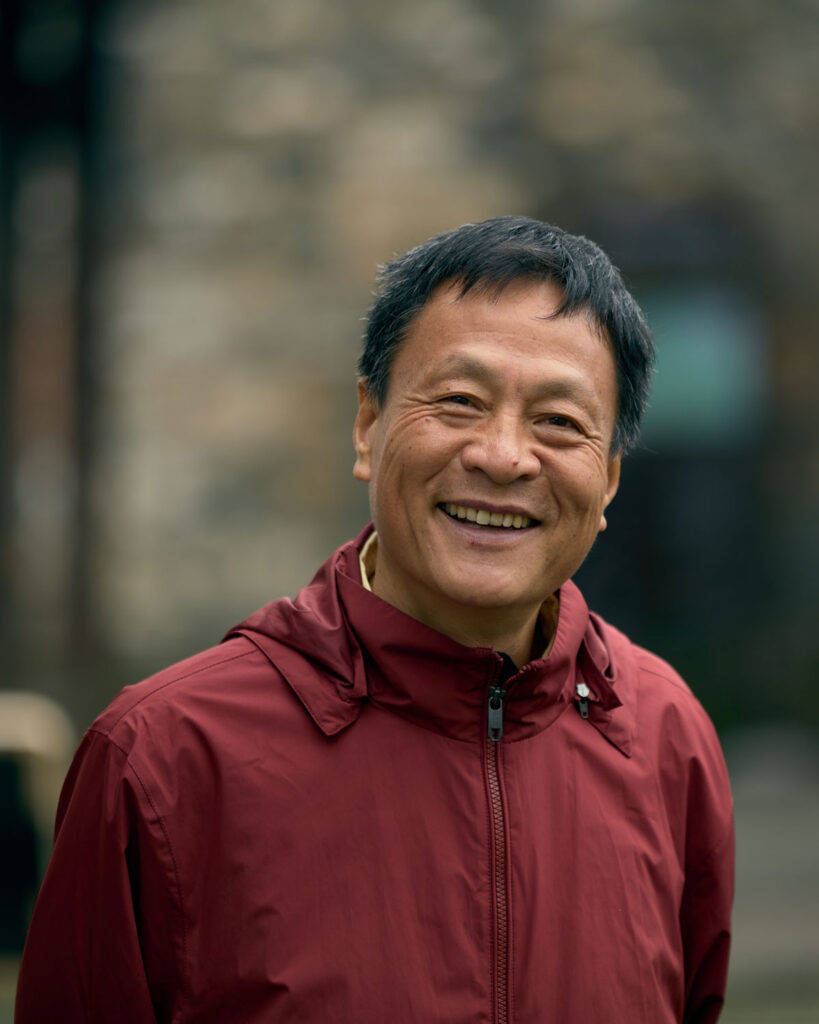
From 1998 to his untimely death in 2025, Yu and his colleagues produced an extensive catalog of place-based approaches toward habitat restoration, maintaining biodiversity, stormwater management and flood control, green building techniques, and other crucial adaptation agendas. These are fully realized experiments: not simply speculative models but on-the-ground responses to unprecedented threats. Spanning many different scales, biomes, climate zones, and urban contexts across China, these case studies offer diverse adaptation strategies derived from the firm’s considerable experience and expertise. While each project necessarily responds to specific environmental and civic contexts, collectively, they constitute an invaluable body of work on the urgent and shared threats posed by climate change. As such, the precedents, practices, and lessons they offer are relevant to any region facing climate change impacts globally. Yu argued that the crucial work of landscape adaptation means rediscovering the “ancient art of survival.”
As we mourn our collective loss, we should remember that we have benefitted from Yu’s exemplary life and works. His boundless enthusiasm and relentless optimism remain with us. Despite our grief he would encourage us all, with his characteristic good humor and enthusiasm for our collective project, to persist in this important work in his wake.
